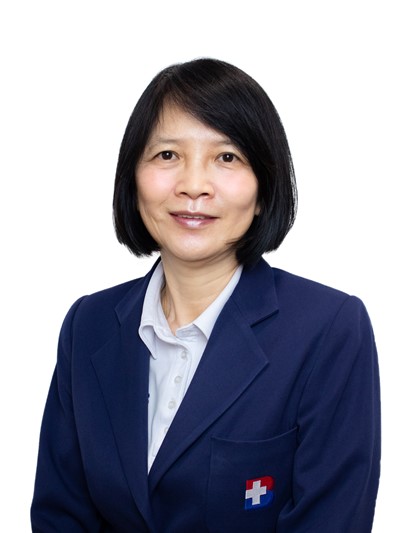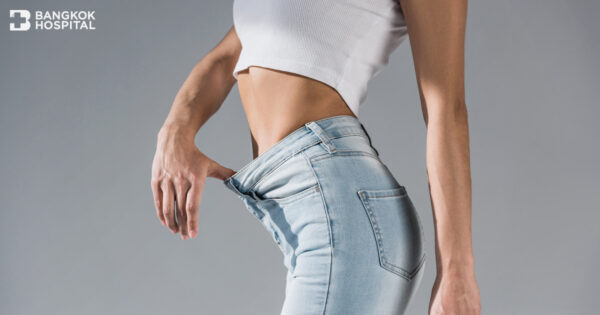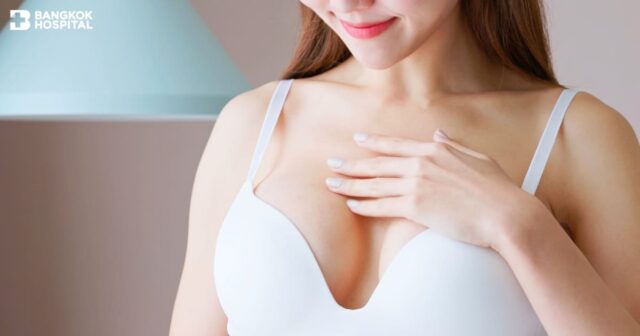Liposuction is a surgical procedure that uses a suction technique to remove an excessive amount of body fat accumulated in specific areas of the body, such as the abdomen, upper arms, buttocks, hips, thighs and neck. Liposuction also contours these areas, resulting in a new shape with improved physical appearance and enhanced self-confidence. Nonetheless, accumulated fat in certain areas of the body cannot be removed by liposuction. Therefore, this procedure must be conducted by highly experienced plastic surgeons with appropriate techniques to achieve the effective outcomes and minimize the risk of undesired effects and complications.
Get to know liposuction
Liposuction aims to remove an excess body fat from certain areas of the body, such as the abdomen, upper arms, buttocks, hips, thighs and neck. Liposuction procedure can be performed with different techniques. Plastic surgeon will select the most appropriate technique based on patient’s treatment goals, the area of the fat to be removed and whether the patients have had other liposuction procedures in the past. During procedure, the plastic surgeon injects certain medications for pain control and blood vessel constriction into the affected area. Then small cuts (incisions) are made into the skin. Through these incisions, the plastic surgeon inserts a thin tube called a cannula under the skin. The cannula is connected to a vacuum that suctions fat and fluids from the body. The removed body fluid may be replenished through an intravenous line. After liposuction, the skin usually molds itself to the new contours. If the patient has good skin tone and skin elasticity, the skin is likely to appear smooth after procedure. On the contrary, if patient’s skin is thin with less elasticity, the skin in the treated areas may appear loose. Liposuction does not aid to improve cellulite dimpling or other skin surface irregularities. In addition, if a huge amount of an excess fat needs to be removed, liposuction cannot fully remove the whole fat accumulation at the same time since the chance of blood loss increases. This procedure must be safely conducted under close supervision of expert plastic surgeons.
Who might consider liposuction
Liposuction is considered beneficial for:
- Overweight people who have excess fat in particular area (s) instead of all over the body
- People who are overweight or pre-obese (mild grade obesity)
- People who failed to previous exercise and diet restrictions
- People who have good skin tone and elasticity
During liposuction
Before liposuction procedure, the plastic surgeon marks circles and lines on the affected areas of the body. Then the plastic surgeon makes small cuts (incisions) sized 0.5-1 cm. and inserts a thin tube called a cannula (a 2-5 mm. diameter) through these incisions. The cannula is connected to a vacuum that suctions fat and fluids from the body. Besides traditional technique, ultrasound-assisted liposuction might be considered in conjunction with traditional liposuction. During ultrasound-assisted liposuction, the plastic surgeon inserts a metal rod that emits ultrasonic energy under the skin. This energy ruptures the fat-cell walls and breaks down the fat, allowing for easier removal. A new generation of ultrasound-assisted liposuction is called VASER-assisted liposuction which uses a special device that aids to improve skin contouring and reduce the chance of skin injuries. The extent of fat removal depends on the affected area and degree of fat accumulation. Minor blood loss during procedure is usually expected. The treated area will be wrapped with sterile cloth or bandage.
Liposuction techniques
There are 2 main types of new liposuction techniques:
- VASER liposuction uses ultrasound-assisted technology to break down fat cells before getting them removed.
- BodyTite liposuction deploys radiofrequency energy to dissolve fat, allows fat to be removed gently. This process of fat removal reduces discomfort and aids healing while inducing collagen production for firmer skin.
These two techniques are considered effective and safe since they do not cause blood vessel and nerve damages. In addition, these techniques result in firming body with faster recovery. However, to choose the most appropriate liposuction technique, the plastic surgeon will consider based on each patient’s condition.
Possible risks of liposuction
- Contour irregularities. Skin may appear bumpy, wavy or withered due to uneven fat removal and poor skin elasticity
- Temporary numbness in the affected area
- Complications caused by excessive fat removal
- Pain around the surgical incisions. Prescribed pain relief medications should be taken as directed.
- Infections or bleeding in the surgical incisions, depending on underlying disease, medications and other health conditions.
Instructions prior to liposuction
- Please keep your surgeon informed about your medical conditions and underlying diseases, including:
- Medical problems
- Serious illness or underlying conditions
- Medical history e.g. surgery and anesthesia administration
- Dental problems e.g. denture and wobbly tooth
- Drug allergy or food allergy
- For patients with high risks or underlying diseases, additional investigations prior to being anesthetized and liposuction include:
- X-ray
- Blood test
- Electrocardiography (EKG)
- Medical consultation with internal medicine doctor
- Certain medications, supplements or herbal drugs that affect surgery must be discontinued at least 7 days before liposuction begins. Please bring all medications and supplements to the hospital on the surgery day. These include:
- Painkillers and anti-inflammatory drugs
- Aspirin
- Vitamin D, C and A
- Cod liver oil
- Stop smoking at least 6 weeks before surgery to prevent infarction or tissue death due to inadequate blood supply to the surgical site. If you are heavy smoker, please inform your surgeon before liposuction. After liposuction, smoke cessation is also highly recommended for at least 2 weeks.
- Stop drinking alcoholic beverages at least 24 hours before liposuction. After liposuction, it is also advised to refrain from drinking for at least 1 week.
- Take a shower and wash your hair prior to liposuction.
- Nail polishing is not allowed.
- In case of being anesthetized, food and fluid restriction must be followed as directed by your surgeon. This aims to prevent aspiration that might happen during anesthesia administration.
- Wear loose clothes to prevent surgical incision injuries while changing clothes.
- For women, liposuction should be avoided during menstruation.
Postoperative care
- After surgery 24-48 hours, pain, swelling and bruising around the surgical area might present. Your surgeon may prescribe medications to control pain and antibiotics to reduce the risk of infection. To reduce swelling, a cold compress is also recommended in combination wearing tight compression garments.
- Wearing compression garments for lifting the muscles and reducing swelling in the treated areas is advised for a month after surgery. Swelling usually resolves within a month while wavy or bumpy skin might take 3-6 months until contour irregularities subside. However, additional recommendations including the use of tight compression or supportive garments will be made by your surgeon.
- After the third day of surgery, if incisions are dry without pain and swelling, taking a shower is allowed. Incision sites must be kept dry and clean without applying other substances besides prescribed medications.
- Follow-up appointment for suture removal will be made in a week after procedure. Applying anti-scar formation or anti-keloid cream or ointment to surgical incisions must be avoided. Topical medications for bruises may be used gently around the bruising areas.
- It is advised to refrain from exercise for a month after surgery.
- To achieve the optimal outcome of liposuction in the long run, diet restriction and regular exercise are essential.
Since liposuction physically removes the fat cells, it exhibits immediate effect which there will be no yoyo effect unless you lose control of your diet with lack of exercise. To sustain the optimal outcome retrieved from liposuction, diet control and exercise to tighten muscles and contour body shape must be maintained. More importantly, liposuction results in superior benefits if skin tone and elasticity are good without saggy or withered skin. In case that skin elasticity is poor e.g. abdominal area of women who used to be pregnant or lose extreme weight (more than 10 kilograms), liposuction might be considered in adjunction to other surgical procedures, such as abdominal lipectomy and tummy tuck (abdominoplasty) to remove excess fat and skin and to restore weakened muscles to create a smoother, firmer abdominal profile.










